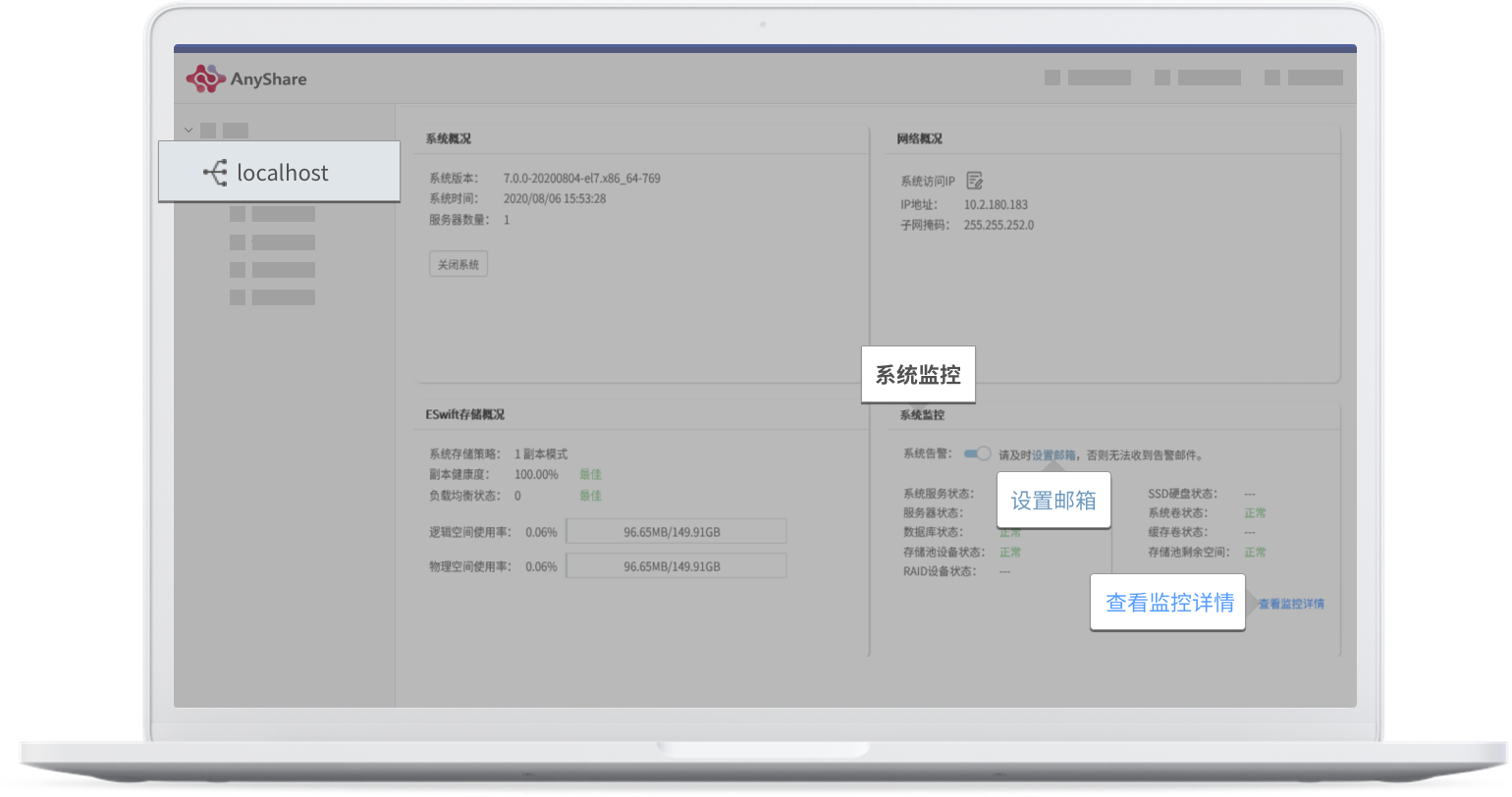How to quickly check the realtime information of the Deployment Console?
An administrator can log in to the Deployment Console and click on “localhost” in the left sidebar to view the relevant information; the information on this page includes the highly available IP, the storage policy configuration and services, and the realtime status of devices. They are managed by four sections respectively: the system overview, the network overview, the storage overview, and the system monitoring.
Note: The page title of the site overview is the hostname set when you deployed AnyShare for the first time. The default name is localhost;
The newly added object storage may cause the storage profile on this page to change.
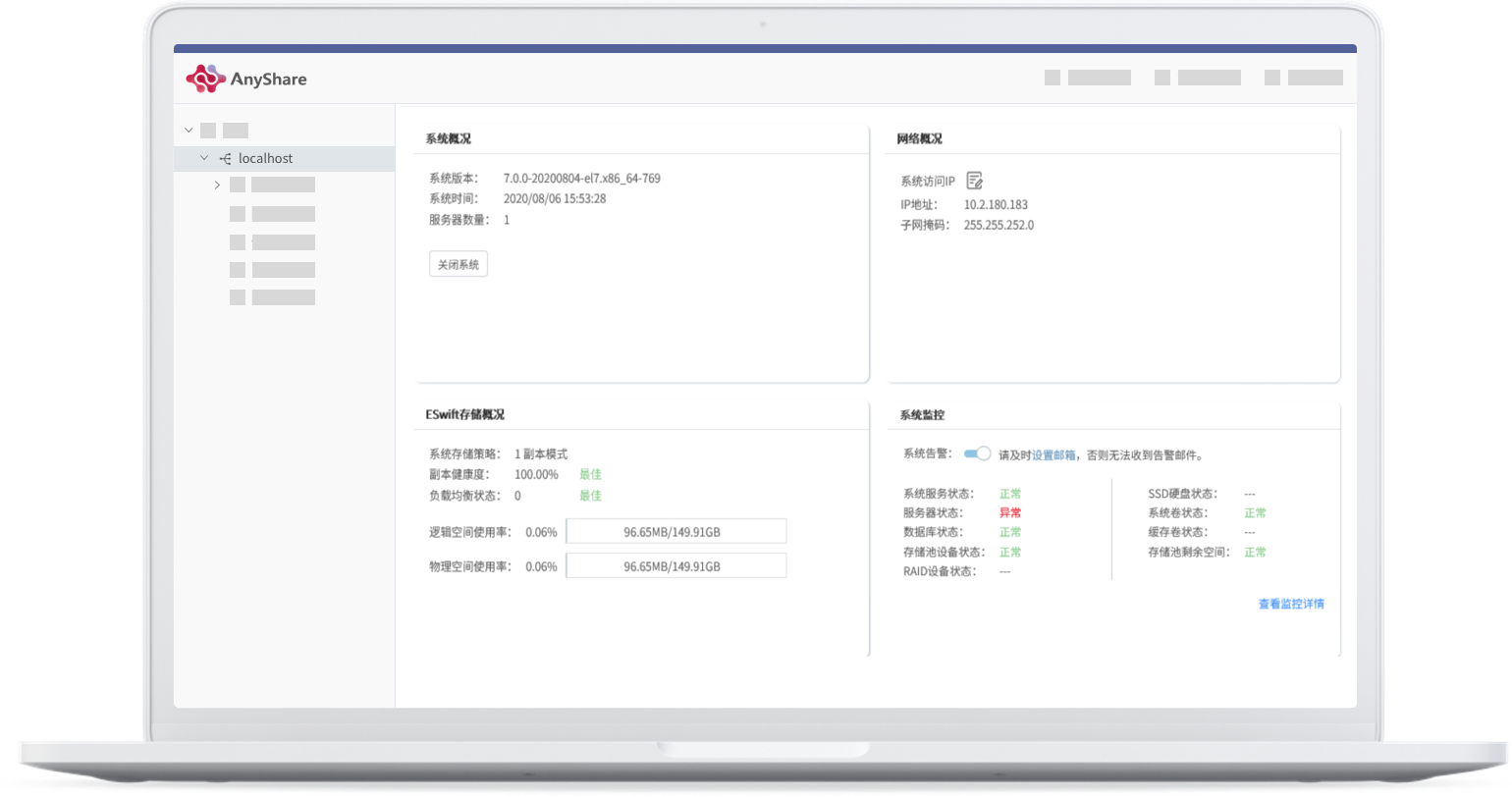
The detailed version information and current system time of the cluster server are provided in [System Overview] in realtime. The AnyShare client and the management console is unable to be logged in after an administrator clicks on [Shut Down] to shut down the cluster system.
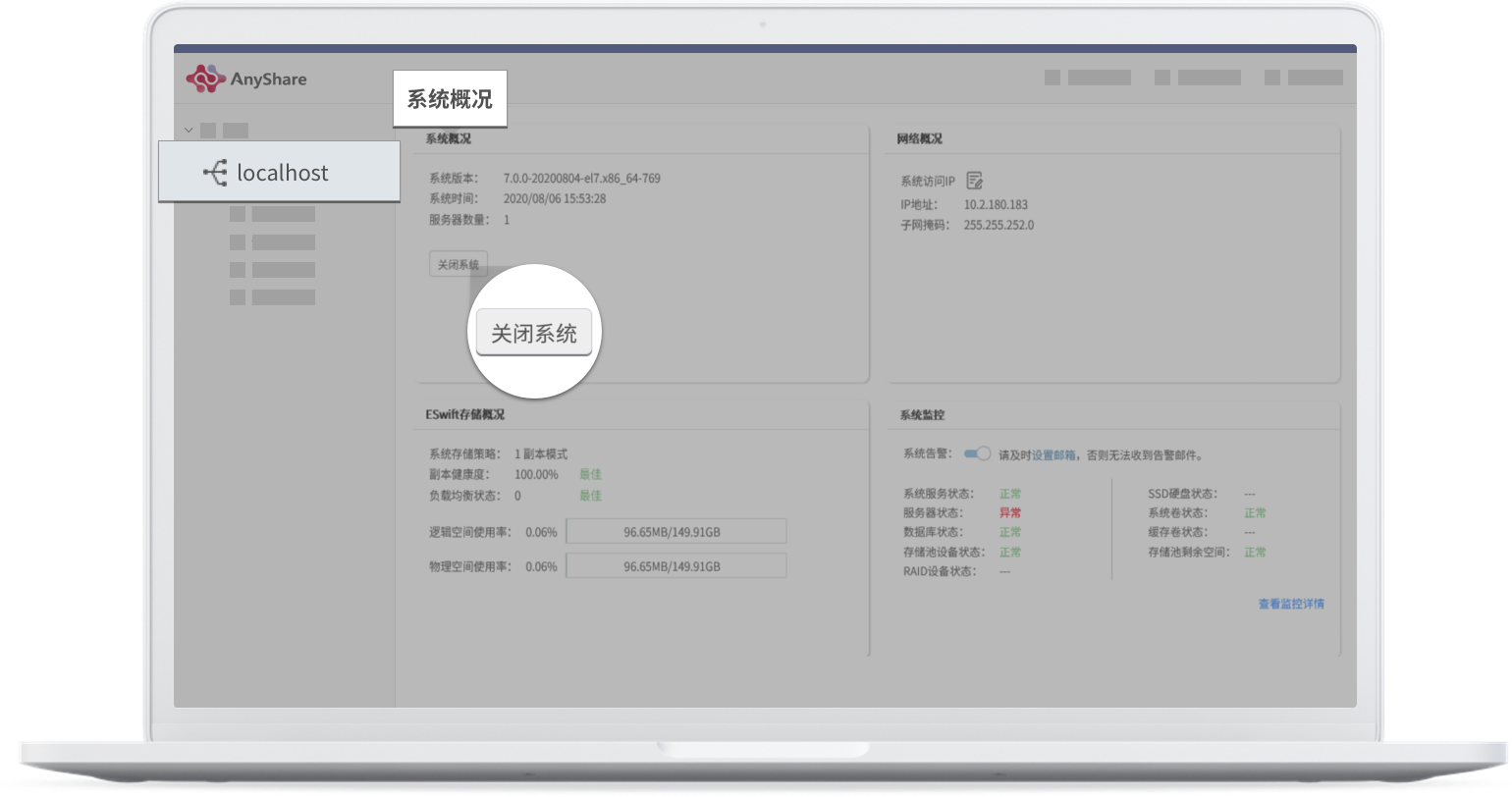
After the high availability service is enabled and the high availability node is set, the corresponding information will be displayed in [Network Overview]. If the current system application and storage have a set of high availability independently, they will be on display separately in [Network Overview] and can be modified by an administrator both. If the current system application and storage share a set of high availability, [Network Overview] can only allow an administrator to view and modify the access IP and the subnet mask in the current system.
Note: It is not recommended to be frivolous to change the IP address and the subnet mask. Incorrect IP address/subnet mask may result in an inaccessible cluster.
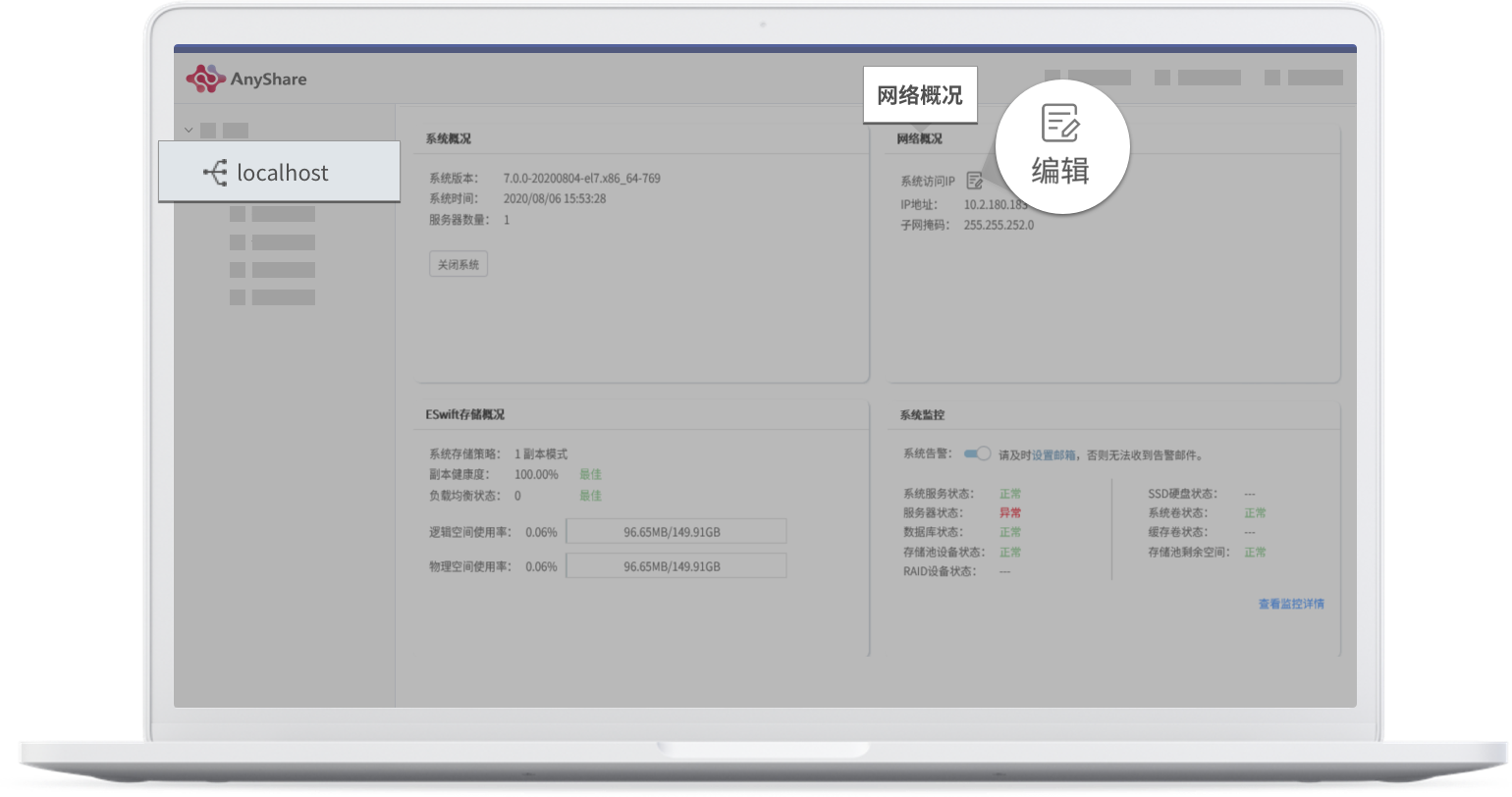
An administrator needs to configure application nodes and initialize storage. Then the storage profile will present the corresponding information according to the storage type selected by an administrator. The storage types are divided into three types, namely Eswift Storage, Eceph Storage, and Third-party Storage.
- Eswift Storage
If the system is asked to configure application nodes, initialize storage, and select the Eswift storage, it will show the storage overview; an administrator can view and change the system storage strategy, monitor the replica health, load balance status, and check the utilization rate of logical space and physical space; if the load balance status data is not 0, the system will have multiple nodes and the node data will be unbalanced. At this time, an administrator can click on [Overload Balance] on the page to balance the data of each node and adjust the system load balance status.
Note: The number of copies in the system storage policy can only be added rather than decreased; the more copies, the higher the system security leading to the reduction of logical free space in the pool; if there are offline devices in the system, the logical storage space and physical storage space cannot be read.
- ECeph/Third-Party Storage
After the application nodes are configured, the storage initialization is carried out, and the Eceph storage / third-party storage is selected, the relevant information will not be directly displayed in the storage overview. An administrator can click on the hyperlink presented in this section to jump to the sub-page of the storage subsystem to view the details;
The screenshot below is an example of the Eswift storage:
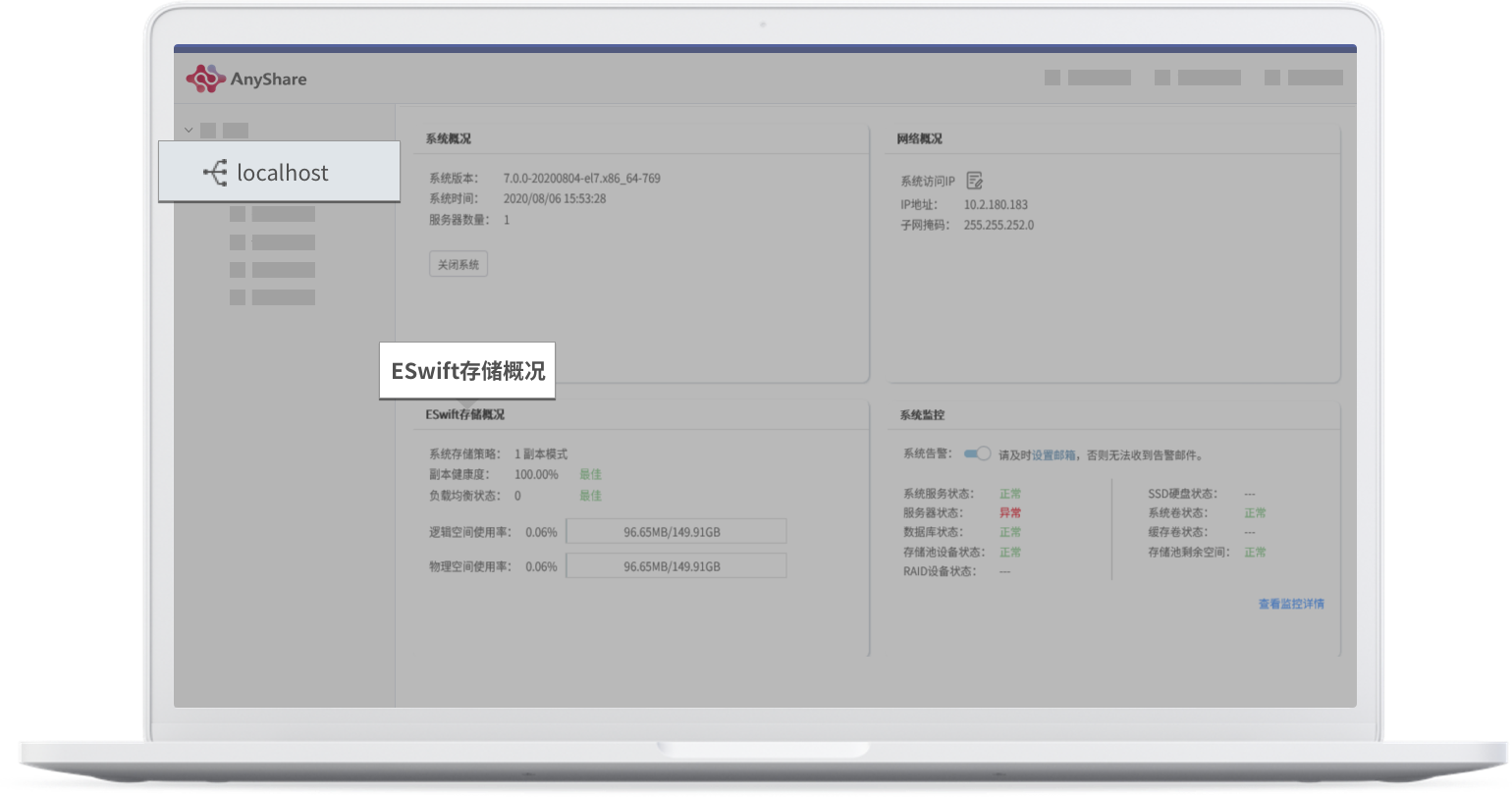
If the monitoring service is enabled, AnyShare will monitor 9 key kinds of alarms arising from the system service status, the server status, the database status, the storage pool device status, the RAID device status and the SSD status, the system volume status, the cache volume status, and the storage pool remaining space; an administrator can click on [Monitoring Details] to view the details including the system service running status, the CPU utilization rate, the memory utilization rate, the network bandwidth utilization rate, among others;
Note: The storage pool device status and the remaining storage pool remaining space are storage-related information which is only displayed after the configuration the Eswift storage is complete;
- Automatic Mail Alarm
An administrator can turn on [Alarm Switch] to perform this function and click on the [Settings] to allow a user to set an exclusive alarm mail enabling the system to perform the realtime alarm service by automatically sending the alarm mail when any alarm item fails or is abnormal; if the system status returns to normal subsequently, it will also send an email to inform the recovery. An administrator should input recipients’ mail addresses and configure the SMTP mail server before enabling this function. After successful settings, recipients will receive the alarm email if the system goes wrong or abnormal.
Note: As soon as you receive an urgent alarm email, please contact AnyShare technicians.
